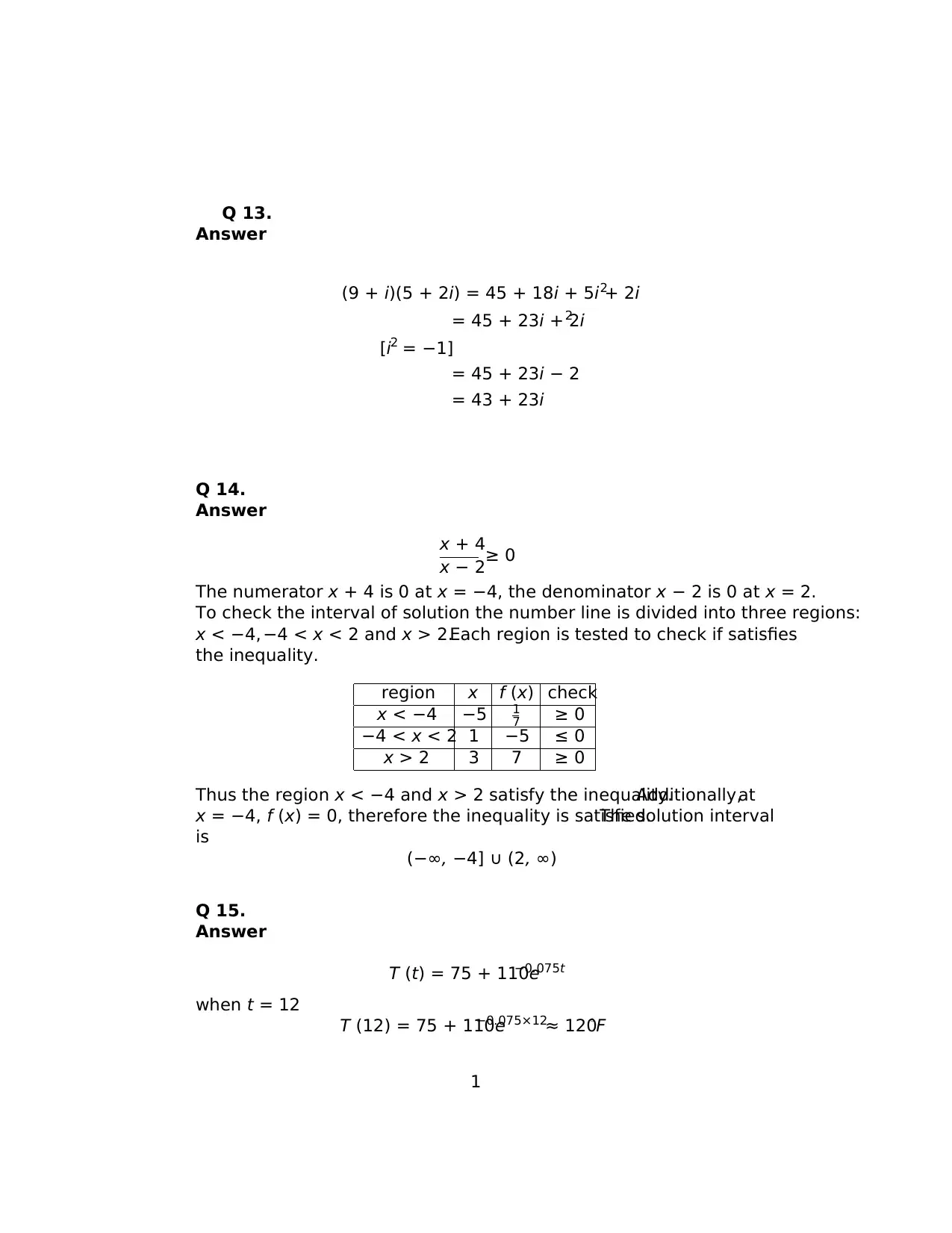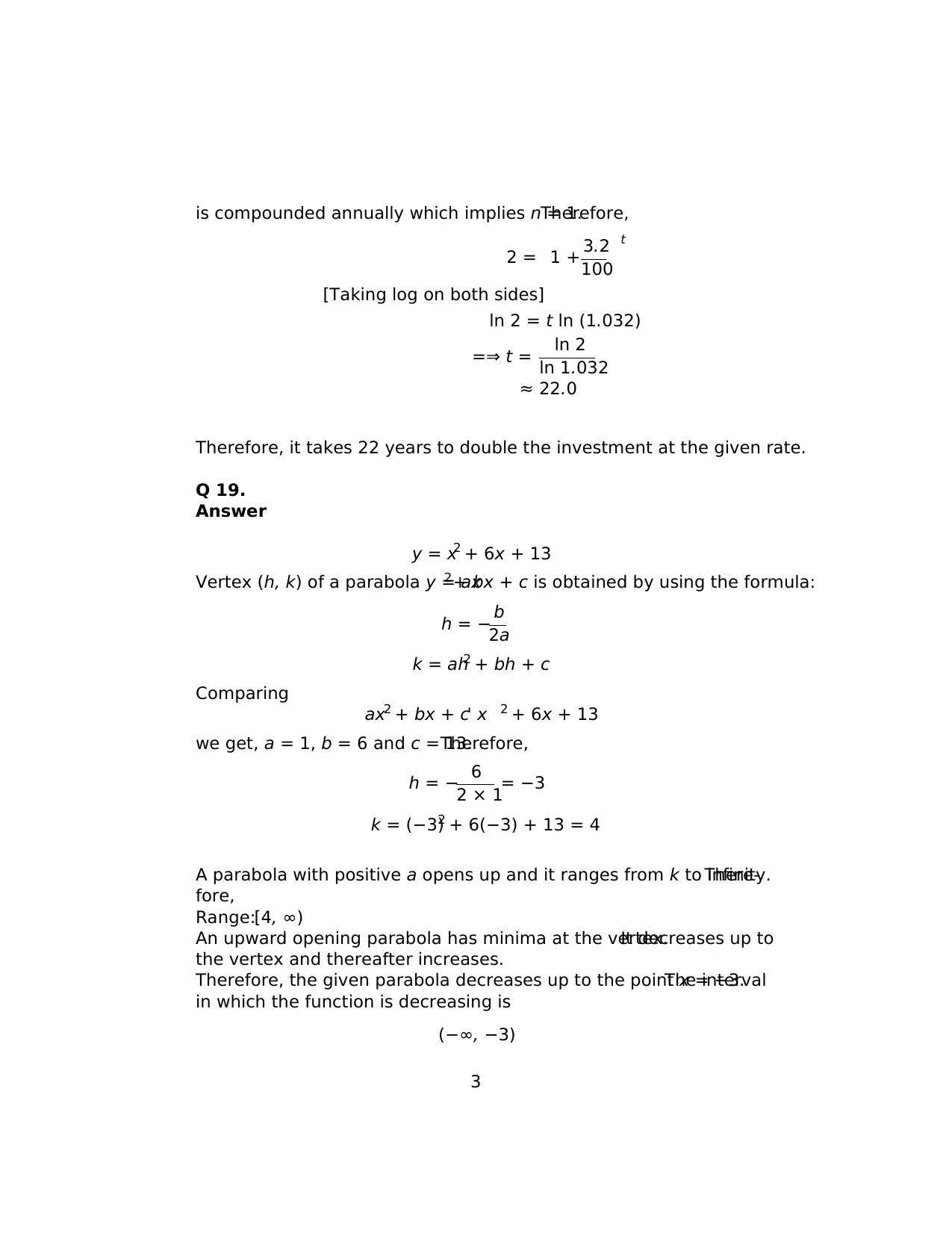MATH 107 College Algebra Final Examination Solutions - Summer 2019
VerifiedAdded on 2022/11/16
|5
|956
|472
Homework Assignment
AI Summary
This document presents the solutions to a College Algebra final examination, identified as MATH 107 from the Summer of 2019. The exam is an open-book assessment and includes a mix of multiple-choice and short-answer questions. The solutions cover a wide range of topics within college algebra, including complex number operations, solving inequalities, exponential and logarithmic functions, compound interest calculations, properties of parabolas (finding vertex, range, decreasing intervals), polynomial functions (end behavior, y-intercept, zeros), and rational functions (domain, asymptotes). The solutions are step-by-step, showing the mathematical processes and formulas used to arrive at the correct answers for each problem. The assignment provides a detailed guide and complete answers to the MATH 107 final exam.
1 out of 5












![[object Object]](/_next/static/media/star-bottom.7253800d.svg)